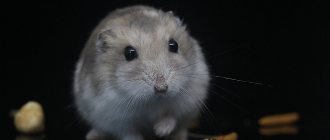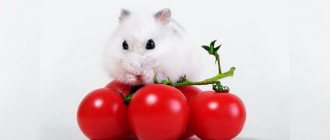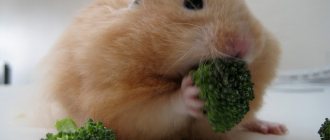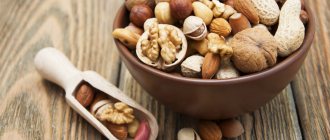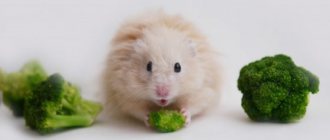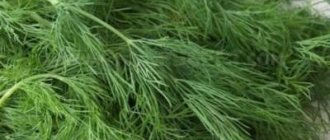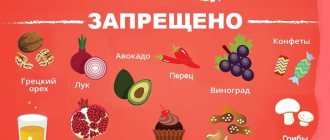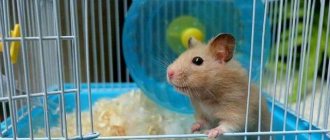/ Hamsters / Can or cannot give banana to ornamental hamsters
0
1884
Article rating
A good owner who has pets always wants to pamper them with treats. Especially if it's a hamster. Feeding these cute rodents is fun, as it is very interesting to watch them stuff food into their little cheeks. Usually, fruits, in particular bananas, are given as treats, without even thinking about whether to give a banana to a hamster or not.
Banana for decorative hamsters
Many hamster owners do not pay special attention to their diet. They give their pets the same things that any other rodents eat: wheat, oats, nuts, various seeds, greens, herbs and fruits. But hamsters' bodies do not tolerate certain foods well, so poor nutrition can be harmful to your pet.
Is it possible to give a hamster a banana?
The basis of a hamster's diet is solid plant food.
Fruits do not belong to this category, but their presence in the diet of animals in limited quantities will bring great benefits:
- high fructose and glucose content promotes activity and vigor;
- fiber will help improve digestion and improve the functioning of the intestinal tract;
- vitamins and minerals will help support the functioning of the cardiovascular system, and also strengthen teeth and bones.
The presence of fruit in the diet of animals is possible only when the animals reach 2-3 months.
Did you know? The older the animal is, the greater the benefit the served delicacy brings to the body.
All the positive qualities of a banana can be devalued by its uncontrolled quantity given to hamsters of different breeds, because... These animals are susceptible to diabetes to varying degrees.
Dzungarian
The Djungarian hamster is the smallest of the entire subfamily in size. Its dimensions do not exceed 10 cm in length, and its weight does not exceed 65 g. Such dimensions require a cage that is not too voluminous to contain it, which means that the hamster does not have much free space for releasing energy.
Find out all the most important things about breeding Djungarian hamsters and how to reproduce them correctly.
The sugar content in a product for an animal prone to obesity and diabetes does not provide adequate space for the “consumption” of consumed calories.
A special feature of consuming the fruit is its soft structure, which is prone to sticking to the inner mucous membrane of the animal’s throat and pharynx.
The miniature size of Djungarian hamsters suggests a high risk of such “sticking” to mucous membranes, especially for cubs and young individuals, which can lead to suffocation and even death.
Important! The Dzungarian breed is characterized by hibernation in winter, which means low activity throughout the season. A banana won't do you any good at this time of year.
Syrian
The Syrian hamster is several times larger than the Djungarian hamster. Its dimensions reach 13 cm in length, and some weigh more than 125 g. This characteristic suggests a more voluminous cage for the animal with the obligatory placement of a “wheel” inside it to maintain physical activity.
A larger cage volume implies high activity of the animal to “expend” the calories consumed, which reduces the risks of obesity and diabetes. Such features make eating bananas more harmless to the animal’s body.
Find out all the most important things for successfully keeping hamsters, how much does a hamster cost and its maintenance, what should a cage for a hamster be like, why do you need a walking ball for a hamster, how many years do hamsters live, what to name a hamster, how to breed hamsters at home, what diseases do they have? hamsters
As for the tendency for pulp to stick to the inner mucous membrane of the throat and pharynx, the likelihood of such situations occurring is somewhat reduced due to the larger size of the animal. Although the possibility of suffocation still exists.
Why you shouldn't feed rodents bananas every day
In addition to the fact that daily consumption of foreign fruits by hamsters can lead to health problems, there are other reasons not to include these fruits in their diet.
- Rodents have a need to wear down their rapidly growing teeth, so they eat mostly solid foods. If you constantly give them soft foods such as banana, then soon the large teeth will begin to interfere with their ability to eat.
- This fruit tends to spoil quickly. Since hamsters, due to their small stomachs, do not eat all the fruit at once, they leave it for later and hide it in a secluded place. In addition to the fact that animals can get poisoned from rotten fruit, other pet supplies lying next to the spoiled banana begin to deteriorate.
- Banana is a heavy fruit in its composition, so consuming it daily can have a bad effect on intestinal function.
But it is recommended to give exotic fruit to older hamsters a little more often. At this age, their teeth are weak and worn down, so they need soft food. In addition, vitamins will improve health, and the energy obtained from the sugar in the fruit will help the rodent move more.
In what proportions is it given?
Hamsters love bananas and are ready to consume them in unlimited quantities. This preference negatively affects the health of animals, and therefore requires compliance with the exact proportions of the supplied amount.
One serving of product for a hamster should not exceed 5 grams, this amount is equivalent to the size of the top of the smallest finger - the little finger. For the Djungarian breed, this piece must be reduced somewhat, for example to 3 grams.
Such a portion guarantees complete consumption of the entire amount, without the possibility of hiding it “for future use.”
Important! This delicacy can be served no more than once a week.
Product table: what Djungarian hamsters can and cannot eat
Can be given Cannot be given With caution or in small quantities GRAINS Oats Pasta Rice Corn Bakery products Buckwheat Wheat Legumes: (peas, beans) Lentils Barley Rye SEEDS AND NUTS Sunflower Brazil nuts Pumpkin Almonds Flaxseed Pine nuts Cashews Cherry, apricot kernels Sesame Acorns Walnuts Chestnuts Hazelnuts Peanuts OSHIEggplant Watermelon Cucumber Broccoli Melon Tomato Zucchini Potatoes Radish Carrots Cabbage Celery Radishes Onions Asparagus Turnips Garlic Cauliflower Beetroot (not sugar) Pumpkin Jerusalem artichoke FRUIT Apple Persimmon Apricot, plum Pear Citruses (orange, grapefruit, lemon) Peach, nectarine Banana Exotic fruits (pineapple, kiwi, mango) BERRIES Barberry Honeysuckle Grapes Hawthorn Elderberry Lingonberries Pitted cherries Strawberries and strawberries Raspberries Sea buckthorn Rowan currants Rose hips GREENS, HERBS Tops of carrots, beets Sorrel Parsley Any lettuce (iceberg, corn) Coniferous tree branches Dill Clover Nettle Dandelions Plantain Leaves and branches of fruit trees (apricot, cherry, apple), other deciduous trees (birch, rowan, alder). PROTEIN PRODUCTSCottage cheese 1% Sausage, sausages Boiled white fish Low-fat white yogurt Raw meat or fish Peeled boiled shrimp Boiled egg (chicken/quail) Milk Gammarus, daphnia Boiled lean meat: beef, rabbit, turkey, chicken (breast). Cheese Mushrooms
Common sense will tell you what to feed your dwarf hamster at home.
Any food from the human table is prohibited, but especially confectionery (cookies, ice cream, chocolate, kozinaki, honey, muesli).
What time can you eat a banana?
The large amount of energy provided by a small piece of fruit determines the permissible time for its consumption. The treat should be served in the morning or first half of the day. So, the hamster’s high activity will not be a hindrance to anyone and by the evening he will completely calm down.
Find out what else hamsters eat.
Another reason for taking fruit in the morning is its high fiber content, which can overload the intestines, because. in the evening and at night, all metabolisms in the body slow down.
In the diet of Djungarian and Syrian hamsters
All types of hamsters eat cucumber pulp with great pleasure
It is important to pay attention to the general condition of the animals before bringing treats. Cucumbers have a strong laxative effect, so it is better to give it for constipation and exclude it from the diet in the opposite situation - if the pet suffers from intestinal problems
Syrian hamsters are more likely than other varieties to become obese. Eating these vegetables is a good preventive measure for them.
Small Djungarian hamsters, on the contrary, are more prone to diabetes. They are prohibited from most fruits and vegetables due to their high sugar content, but cucumbers will be very useful. It is better to produce fruits of medium size - the concentration of ascorbic acid, necessary for all types of rodents, is much higher in them than in larger ones.
Cucumbers are incredibly healthy. Do not forget that the animal’s diet had to be varied. A cucumber diet will not provide him with all the important vitamins and minerals. Alternate vegetable treats with herbs or special vitamins for rodents. The more closely you monitor your hamster’s nutrition and health, the better and more enjoyable his life will be.
Possible contraindications
There are no clearly defined prohibitions for hamsters to eat bananas, but it is still necessary to take into account possible contraindications.
These could be:
- the presence of diabetes in the animal, characterized by excessive drinking, excessive appetite and excess weight;
- female pregnancy - the fruit provokes high gas formation in the intestines, which can lead to the loss of cubs;
- an animal that has not reached 2 months—the young body is not quite adapted to eating wet food;
- individual intolerance or lack of preference in use.
Important! Observation and attention of owners to their pet will help to prevent possible contraindications in time and minimize threats to life and health.
Hamsters
Most often, hamsters of the Djungarian and Syrian breeds are sold in pet stores. Although now you can also find Angora, furry animals. But these are already the fruits of human selection work. Syrian hamsters have golden fur. Body length can reach 20 centimeters. Dzungarian individuals are smaller than their Syrian relatives. Their body length is up to 10 centimeters, and their color is distinguished by several dark, almost black stripes running along the back. Both breeds of hamsters are undemanding in terms of living conditions.
You just need to install a sufficiently voluminous cage, lay down sawdust or a special filler, install a feeder, a drinking bowl and a play wheel for physical exercise.
Useful tips
The following tips will tell you how to give a banana correctly so that it does not harm the animal:
- Tip 1: Banana should be served in quantities of 5 g and no more. Hamsters really like this fruit, they are not prone to restrictions in the process of eating it and may require additional portions, which is fraught with health consequences.
- Tip 2: Make sure your hamster consumes the entire portion of the treat served. Hamsters are thrifty animals, and therefore can hide a piece of quickly spoiling treats, which will ultimately cause spoilage of other products hidden nearby. Eating spoiled food will negatively affect the health and life expectancy of your pet.
- Tip 3: Offer a banana as a “dessert” after the main meal. A banana is a wet product, and the basis of the diet of all rodents is only solid food. For this reason, this product cannot be included in the animal’s daily diet.
- Tip 4: If breathing is difficult due to the “sticking” of fruit on the mucous membrane of the throat or pharynx, any solid food given to the hamster to free it from stuck pieces can facilitate passage. Unfortunately, the property of fruit to stick to mucous membranes cannot be prevented or minimized - it depends on the physiological functions of the animal itself.
- Tip 5: It is not the fruits themselves that bring great benefit to the animals, but the banana chips made from them. Hamsters need solid food to wear down their ever-growing teeth, and banana chips in this form provide great benefits, providing nutrients to the body and helping to wear down the teeth.
- Tip 6: To prevent diabetes, you can serve a serving of banana no more than once every 7 days. The animal’s small body is not able to cope with the excessive amount of sugar in the fruit, and therefore you should not often resort to such a delicacy.
Did you know? The “safest” thing to feed your hamster is not banana pulp, but the peel. It contains more fiber, which reduces possible problems in the gastrointestinal tract.
Proper nutrition and a healthy diet affect the lifespan of hamsters. Banana in such a diet is an ambiguous product - it benefits the animal’s body, saturating it with nutrients, but at the same time it can cause suffocation and lead to the death of the pet.
To reduce the risk of undesirable consequences, there is an important rule - offering small portions of treats only after the main meal and no more than once a week. Before the first feeding, it is also necessary to take into account possible contraindications to eating banana.
How many times a day should you feed your hamster?
Nutrition and diet are of particular importance for the healthy existence of a hamster.
Feeding frequency
Due to the increased activity of these pets at night, two main feeding options are preferable:
- once - late in the evening;
- twice - in the evening and early in the morning.
In this case, the main volume of food should be consumed in the evening feeding.
If the owner determines for himself a comfortable time for feeding the animal and sticks to it, then the rodent will always wait for the food it is supposed to eat at exactly this time. And such stability in the timing of food supply has a positive effect on the animal’s digestive processes.
Also, due to their accelerated metabolism, these pets may wake up several times during the day to snack.
The breeder is also recommended to:
- Do not overfeed the animal - feeding twice a day is most optimal.
- Do not disturb the rodent's sleep by constantly feeding it throughout the day.
- Regularly audit inventory, removing spoiled products.
Amount of food
The owner must determine the amount of food for the animal, taking into account the following points:
- what is his physical activity;
- what age is the animal, since young animals need more food;
- what is his physiological state - painful condition, pregnancy or lactation period;
- what are the environmental conditions – room temperature.
The breeder does not have to resort to such precise mathematical calculations. It is enough to observe the animal for several days to determine how much food it needs.
It is important not to overdo it with the amount of food, otherwise the hamster will quickly gain weight. This will have an impact on his health and life expectancy
Read with this
Is it allowed to give proteins and milk to eat?
Under no circumstances should you treat your hamster to fried or fatty foods.
This is deadly for him. Once a week, the pet is given cottage cheese, a boiled egg, boiled chicken or beef, and boiled fish without bones. The pet store sells grasshoppers, specialty cockroaches and worms to supplement and diversify your diet.
Animals can die if they eat inappropriate food. They do not distinguish food that is dangerous to them, guided only by the delicious smell of food.
To do this, you need to study and remember what absolutely cannot be included in a hamster’s diet.
List of permitted and prohibited foods for hamsters
| Authorized Products | Products allowed in small quantities | Products prohibited for feeding a hamster |
Ready meals | ||
| Porridge in water, cereals steamed in water Bread crumb soaked in milk Boiled lean fish Boiled chicken breast without skin and salt | Boiled potatoes without salt combined with pumpkin (for an old animal) | Breakfast cereals (contain additives, preservatives) Fried, fatty Spicy Pasta (dry) Sausage (excess salt, preservatives, flavoring additives) Oil Salt, spices |
Carefully monitor your hamster’s diet; he himself cannot distinguish between good and bad.
Sweets, sugar | ||
| Authorized Products | Products allowed in small quantities | Products prohibited for feeding a hamster |
| — | — | Honey Sugar, confectionery Chocolate (deadly) |
Milk and dairy products | ||
| Low-fat foods: cottage cheese, kefir, unsweetened yogurt | Sour cream | — |
Eggs | ||
| Boiled chicken egg | Boiled quail eggs | — |
Your pet's diet should be varied
Fruits | ||
| Authorized Products | Products allowed in small quantities | Products prohibited for feeding a hamster |
| Fresh fruits: peaches, apricots, apples, pears, plums, bananas Dried apricots | Grapes Raisin Banana Melon | Persimmon (causes intestinal obstruction) Tropical fruits (kiwi, pineapple, coconut) Citrus Fruit seeds (contain hydrocyanic acid) |
Berries | ||
| Blueberries, cherries, strawberries, raspberries | — | Watermelon (perishes quickly, may contain excess fertilizer) |
Vegetables | ||
| Carrots (dried and fresh) Chinese cabbage Patisson, zucchini Boiled legumes (without salt) Lettuce Beans (green beans) Fresh corn | Cucumber, tomato Beetroot (changes stool color to red) | Hot pepper Cabbage (causes colic, especially dangerous for young individuals) Lettuce, leek Garlic |
Fresh berries and fruits are good for a small pet
Nuts and seeds | ||
| Authorized Products | Products allowed in small quantities | Products prohibited for feeding a hamster |
| Cashews, hazelnuts, walnuts, oats, millet, wheat, dried peas, beans, lentils Melon seeds Sunflower seeds, pumpkin seeds, flax seeds, sesame seeds | Peanut | Almonds Pomegranate seeds, watermelon |
Plants, plant parts | ||
| Nettle, dill, clover, wheat sprouts, alfalfa, lettuce, parsley, plantain, hare cabbage, beet tops, carrot Branches of birch, maple, willow, oak, poplar, beech, walnut, ash Branches of apple, pear, rose hip | Dandelion | Celandine (poisonous), sorrel Branches of coniferous trees (resin is toxic) Houseplants Potato eyes (contain poison - solanine) |
| Adblock detector |
In this article, I will briefly talk about the diet of a hamster in the natural environment, and I will dwell in detail on feeding a rodent when kept at home. I will separately list what you can feed the animal and the foods prohibited for feeding.

